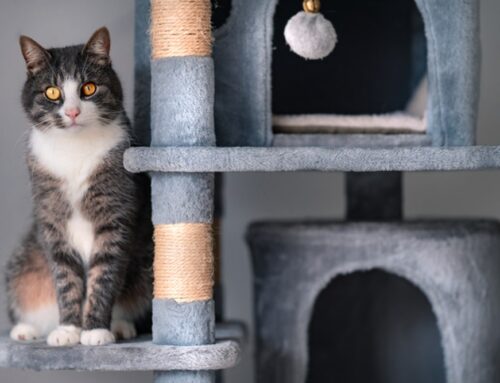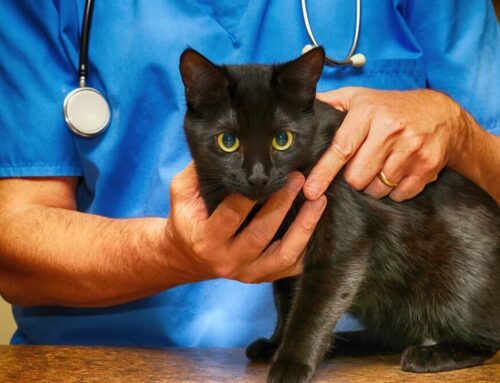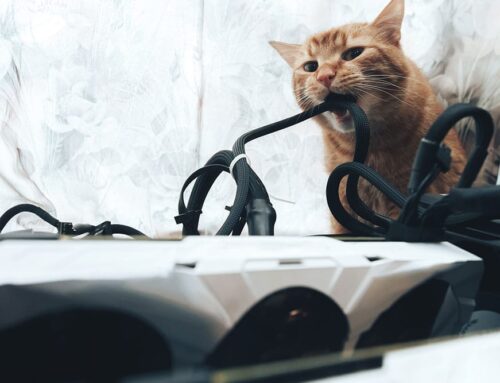We all want to do what’s best for our beloved feline friends, but giving them pills can be a challenge. Cats are quick, have built-in weapons, and can hide for days at a time. Some pet owners can possibly handle a week or two of medication administration, but what happens if you have to give daily, lifelong medication? What about the cats that won’t take any medication at all? Just Cats Clinic shares how compounded medications can save the day.
What are compounded medications for cats?
Compounded medications are customized formulations of existing drugs, made by a specialized pharmacy and for a specific pet. Compounds are created from commercially available, FDA-approved drugs, or made from raw ingredients to create otherwise unavailable products. Veterinarians prescribe these medications when no other products suit a pet’s medical needs. Common ways drugs are altered to meet those needs include concentrating, diluting, mixing with other drugs, adding flavor, and changing dosage form.
The most common scenario for compounding involves making pills into an easier-to-administer liquid. Other medication forms include chews, quick-dissolving tablets, capsules, eye and ear medications, and transdermal gels that absorb through the skin to produce systemic effects.
Why are compounded medications used in cats?
Cats are sensitive creatures who often respond to stress by manifesting physical or behavioral problems, such as bladder inflammation, sneezing, runny eyes, or peeing outside the box. Wrestling your cat to administer a pill can be stressful for you both, and giving medications long-term could damage your bond and cause ongoing health issues. To keep everyone happy and healthy, use a compounding pharmacy to create a version of medication that your cat will readily accept.
Some medications commonly used in cats are available only in human-sized doses. Since we can’t reasonably cut tablets into one eighth or smaller, compounding fixes this problem. Liquids, chews, capsules, and transdermals can be customized to provide the exact amount needed per dose.
What compounded formulations for cats are most common?
The most popular compounded medication formulations for cats are liquids and transdermals. Many cats are notoriously difficult to “pill,” and this struggle can lead to missed doses or a breakdown in your relationship with your cat. Liquids and transdermals are lower-stress alternative dosing forms.
A liquid’s concentration can be easily customized so that each dose requires only a small volume. Almost any medication can be made this way, but some crushed pills are bitter, so ask your veterinarian for recommendations on flavor options that will cover the bad taste.
Transdermals are great solutions for pets who cannot be given anything by mouth, or convinced to take anything in their food. These require a measured amount of gel or cream to be rubbed onto the hairless skin of the inner ear flap, where nearby blood vessels quickly absorb the medication. Skin redness or inflammation can result in the administration area, but the benefits outweigh the risks for most cats. While we wish all medications could be compounded to transdermal formulations, we are limited to drugs that are adequately absorbed through the skin barrier, such as methimazole.
What feline conditions may require compounded medication?
Many common conditions in cats can be treated with a compounded medication, including:
- Diarrhea — Metronidazole is an antibiotic used in liquid or mini-tablet form to treat diarrhea.
- High blood pressure — High blood pressure management involves first finding and treating the underlying cause, but daily medication is often still required to bring blood pressure into a normal range. Amlodipine and benazepril can be made into a liquid form for long-term use for this condition. \
- Hyperthyroidism — Hyperthyroidism typically requires treatment with a daily medication called methimazole. While a commercially available product (i.e., Felimazole) exists, not all cats are willing to take a daily pill, and may respond better to a compounded liquid or transdermal. Doses can also be increased or decreased in smaller increments when using the compounded forms.
- Behavior problems — Medications such as fluoxetine, alprazolam, and gabapentin treat stress and anxiety-related problems in cats. Transdermals are often the best choice to reduce stress as much as possible.
Are there risks associated with using compounded medications for cats?

Compounded medications are safe when you work with a reputable pharmacy. These facilities follow FDA guidelines for safe manufacturing practices, and some go above and beyond with specialized certifications.
Efficacy, however, may be another story. Compounded medications have been altered from their original form, so you cannot ensure they will work the same way they did prior to compounding. For this reason, commercial/FDA-approved medications will generally be recommended first if they are a medically appropriate choice. Some medications have been studied in compounded forms, so effectiveness is likely, but still cannot be guaranteed. Your Just Cats Clinic veterinarian will weigh this small risk against the potential benefits, and decide whether to prescribe a compounded medication based on your pet’s individual needs.
When choosing a veterinary compounding pharmacy, we look for accreditation, such as from the Pharmacy Compounding Accreditation Board (PCAB), that ensures the pharmacy meets certain established standards. We prescribe many compounded medications through Covetrus, which uses Roadrunner Pharmacy. Roadrunner is PCAB-accredited, and has established a reliable reputation for quality and consistency. Smaller, less experienced pharmacies may provide inconsistent medication that vary in dose concentrations.
Medication administration doesn’t have to be a battle. Compounded medication can decrease stress, preserve the bond between you and your cat, and ensure they get the treatment they need. Contact us if you have questions about compounded medications and your cat—your Just Cats Clinic team is here to help.













